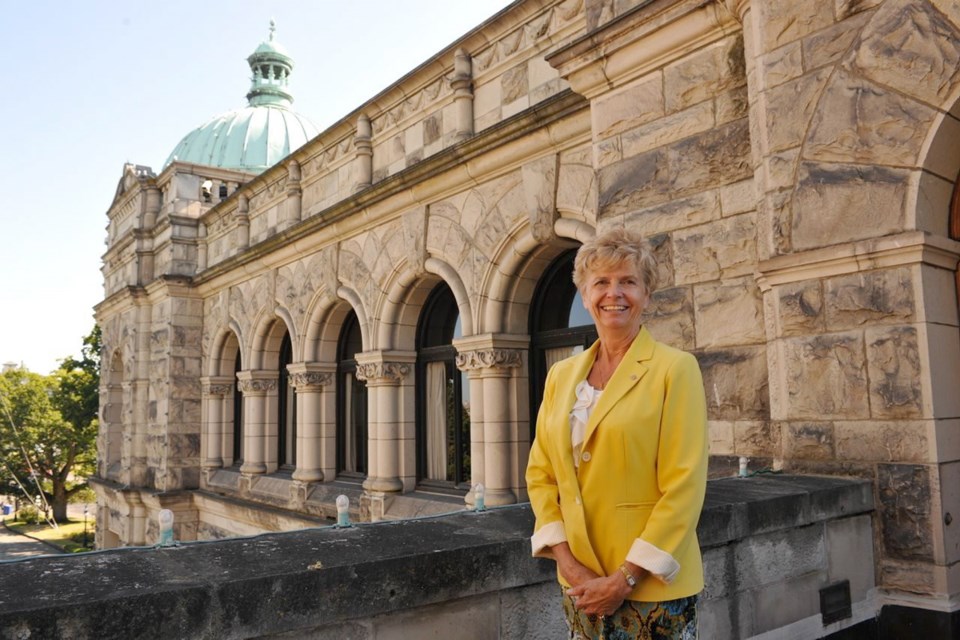 The Supreme Court of Canada decision that boxed the B.C. Liberals into spending hundreds of millions of dollars more on education is only one of the corners that the government finds itself in.
The Supreme Court of Canada decision that boxed the B.C. Liberals into spending hundreds of millions of dollars more on education is only one of the corners that the government finds itself in.
Under the general heading of “rural education,” there’s another part of the school yard where the government has limited options.
A year ago, the Education Ministry was presiding over a funding system that was forcing school districts to consider shutting down dozens of under-used schools all over B.C. The Vancouver district, where several schools were on the mothball list, got most of the attention.
It turned into a protracted fight where the board and staff turned on each other. Eventually, the closure process was abandoned, but Education Minister Mike Bernier still fired the board for not balancing its budget on time.
It was by no means the only place where the arguments raged. All through the Interior there were smaller but just as intense fights about the imminent closure of schools. The critical point is that more than a few were in Liberal ridings.
Sensing trouble, Premier Christy Clark stepped up in June to ease the tension. A few million dollars were found to cancel the shutdown plans in nine smaller communities.
To further ease the tensions, Clark named Liberal MLA Linda Larson a parliamentary secretary for rural education, signalling that the problem was going to get further attention. Larson holds the Boundary-Similkameen riding, where the imminent closure of the high school in Osoyoos was a flashpoint.
Subsequently, the Supreme Court of Canada sided with the teachers in the epic fight over contract-stripping. The government then had to turn the funding taps wide open, with $100 million injected immediately into the system. That translated into about 1,100 new hires in the past few months.
Last week, the government and the teachers agreed to a deal on how the decision will be implemented. It means there are hundreds of millions of dollars more to come, which means a few thousand more new jobs.
All of a sudden, qualified teachers are the hottest commodities in the labour market.
But filling that demand all over B.C. is a major challenge, given the rural-urban divide. Finding teachers for remote rural schools has always been a problem. Larson said she has heard “over and over again” how tough it is.
Now it’s going to get even tougher, with all the major urban school districts hunting for hundreds of new teachers.
“This provincewide hiring drive makes the recruitment challenge for rural schools all the more pressing,” said Larson.
About 800 teachers move to B.C. every year, and about twice that many graduate. But the urban districts are likely going to be scouting the rest of B.C., as well.
Bernier and Larson announced $2 million on Tuesday to enhance recruitment and retention in rural districts. Alternatively, it’s to fend off poaching from urban districts.
Some rural districts already pay a $2,300-a-year retention bonus. Now those teachers will be eligible for free job-posting services, travel expenses for professional development, relocation costs and transitional housing help.
It’s designed to keep rural teachers where they are, and also possibly lure urban on-call teachers into full-time jobs in the North and Interior.
Larson has been working on recommendations for rural education since last summer, but they won’t be ready until after the election.
The funding hike last summer averted several rural school closures. But NDP education critic Rob Fleming said it’s just a bizarre temporary form of protection and they could end up on the closure list again. He said the basic rural-education problem is the funding formula.
Even with all the new teachers, there will still be schools with dwindling numbers of students that are inefficient to run. How the influx of new teachers plays out against the enrolment patterns in rural B.C. is going to be tricky.
Schools are integral parts of rural communities, regardless of how many students or teachers are in them. Tuesday’s funding announcement might buy some time, but it will take even more money to sort this out to everyone’s satisfaction.



